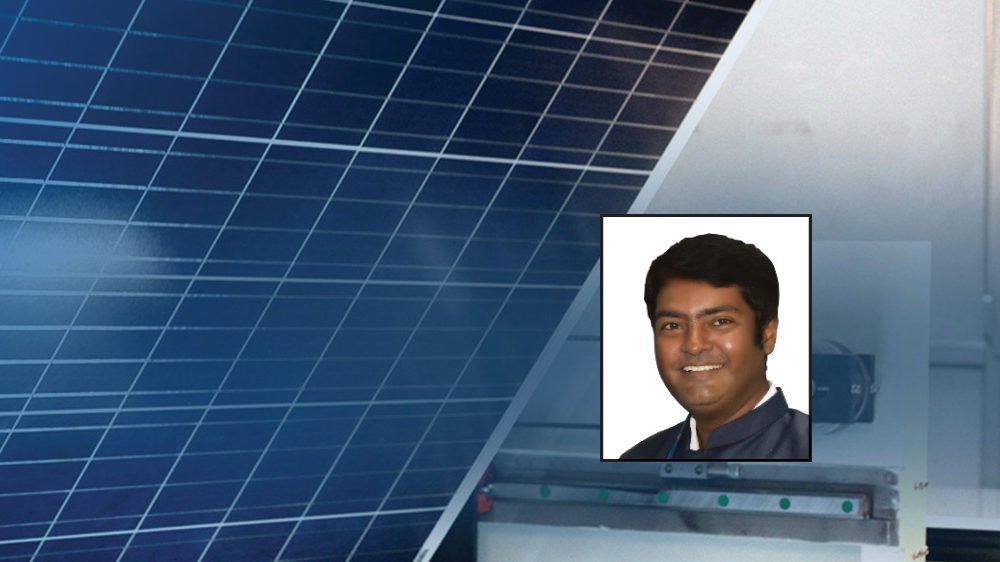India: A Solar Bright Spot
By EPR Magazine Editorial March 21, 2018 5:41 pm IST
By EPR Magazine Editorial March 21, 2018 5:41 pm IST

Soumyen Mukherjee, President, Sova Solar Ltd gives an overview of the solar power sector in India.
It is a matter of pride that India is no more a developing country which needs to be dominated by economically developed forces. Like all other major developed economies, our country has focused on infrastructure development. For the purpose of sustainable growth of the Indian economy a continuous effort to develop an adequate infrastructure is very much essential. It is undoubted that power is one of the most critical and major part of infrastructure in regard to the economic growth of a country. India’s power sector is one of the most diversified in the world. Electricity demand in our country has increased in myriad fold and is expected to shoot up further in the coming years.
India has recently moved up 73 spots to rank 26th in the World Bank’s list of electricity accessibility in 2017. More interestingly it is to be noted that India ranks third among 40 countries in EY’s Renewable Energy Country Attractiveness Index, on back of strong focus by the government on promoting renewable energy and implementation of projects in a time bound manner.
The Indian Government led by Prime Minister Narendra Modi has set an ambitious target to achieve 175 GW capacity in renewable energy by 2022. Out of which 100 GW from solar energy and 60 GW from wind energy. Though the target seems very ambitious, but the initiatives taken by the government are also very commendable. A ‘rent a roof’ policy is being prepared for supporting its target of generating 40 GW of power through solar rooftop projects by 2022. In September 2017, the government launched the Saubhagya scheme to provide electricity connections to over 40 million families in rural and urban areas by December 2018 at a cost of US$ 2.5 billion.
The immediate goal the Indian government is to generate two trillion units (kilowatt hours) of energy by 2019. It has been reported that a total of 16,064 villages out of 18,452 un-electrified villages in India have been electrified up to December 2017 as part of the target to electrify all villages by 1st May 2018. The Government of India has taken a very eye-catching initiative to grasp the investors’ mind – that is 10-year tax exemption for solar energy projects. In order to achieve India’s ambitious renewable energy targets of adding 175 GW of renewable energy, including addition of 100 GW of solar power, by the year 2022 and to boost the Indian power sector, Government has taken many other initiatives. Some of them are as follows:
• According to Power Minister Raj Kumar Singh, all the states and union territories of India are on board to fulfil the Government of India’s vision of ensuring 24×7 affordable and quality power for all by March 2019.
• Initiatives taken by the Energy Efficiency Services Ltd (EESL) have resulted in energy savings of 37 billion kWh and reduction in greenhouse gas (GHG) emissions by 30 million tonnes.
• Under scheme of Unnati Jyoti by Affordable LEDs for All (UJALA) over 280 million LED bulbs were distributed to consumers in India by EESL as on December 19, 2017 and 524.3 million LED bulbs were sold by private players till October 2017.
• The Power Minister also informed that the union and state governments have agreed to implement the Direct Benefit Transfer (DBT) scheme in the electricity sector for better targeting of subsidies.
This not at all an exhaustive list of schemes and initiatives undertook by the government.
We use cookies to personalize your experience. By continuing to visit this website you agree to our Terms & Conditions, Privacy Policy and Cookie Policy.